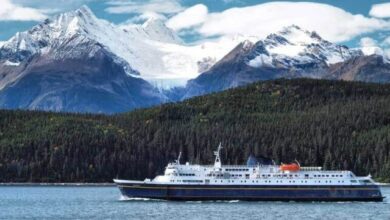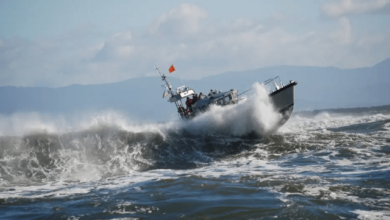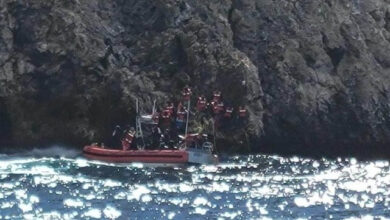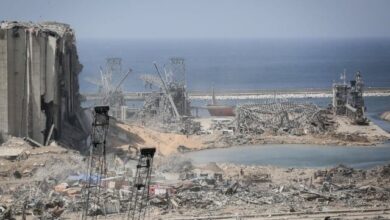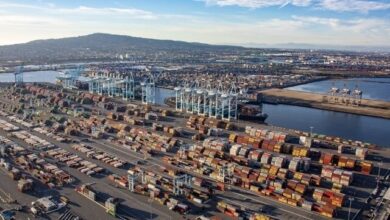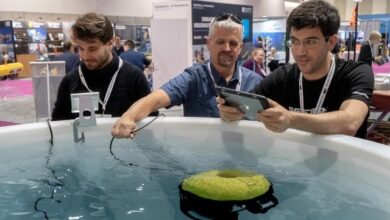Articles : MAREK GRZYBOWSKI writ to ” Blue Economy ” The port of Gdynia continues investments
The Port of Gdynia maintained an increase in transhipments in the first 4 months of the year.
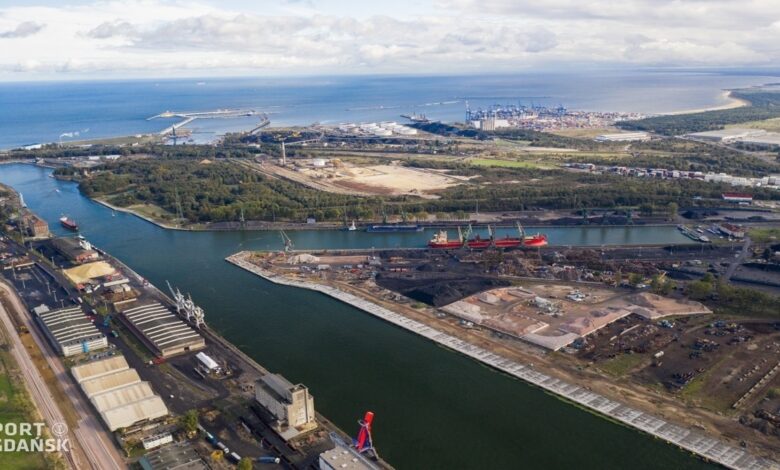

By: MAREK GRZYBOWSKI
The Port of Gdynia maintained an increase in transhipments in the first 4 months of this year. Over 8.26 million tons had been transhipped at Gdynia terminals by the end of April.
This is a growth dynamic of 102.3% year on year. Other Baltic ports reported drop in cargo and container handling by around 10%. Liquid fuel transhipments were maintained at 98% in Gdynia. Slight decreases are also visible in general cargo (94.7%) and container (91%) transshipment in the first 4 months.
The Port of Gdynia transhipped 24 million tons and almost 900 thousand TEU containers in 2019. Important investment decisions were also made in 2019. New infrastructure investments will facilitate access to the sea terminals from the sea and rail and road routes.
“We started and ended the year with records. “Charlotte Maersk” was the longest container ship that ever called at the port of Gdynia (347 m). We also managed to beat the transshipment result from 2018 by almost half a million tons,” said Adam Meller, President of the Board of the Port of Gdynia Authority S.A. at a press conference.
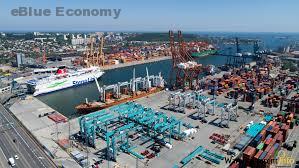
Ferry Terminal. In 2019, construction of a public ferry terminal had begun as well as preparations for the construction of the Outer Port at the Port of Gdynia. The new terminal will improve the quality of service for the passengers and the transport companies on the Gdynia (Poland)–Karlskrona (Sweden) route.
The project “Construction of a Public Ferry Terminal at the Port of Gdynia” includes various investments like building the ferry terminal of a cubic capacity of 30 thousand m and warehouse of 7 thousand m cubic capacity, redevelopment of 600 meters of quays, as well as construction of yards and parking lots of a total area of 65 thousand square m.
Such an investment was needed for several reasons. A modern ferry terminal has been operating in Karlskrona (Sweden) for several years. The ferry terminal in Gdynia is already 30 years old. Annually, Stena Line serves around 600,000 passengers.
The terminal has a double ramp and good communication with the national roads of Poland and Europe. That is why transport companies manage 120,000 trucks for the Gdynia-Karlskrona ferry connection every year. About 100,000 passenger cars and buses were carried by ferries every year. The Port of Gdynia is an important part of the Trans-European Baltic-Adriatic Corridor. The corridor is approximately 2,400 km long and connects key transport regions from Poland, Czech Republic, Slovakia, Austria, Slovenia and Italy.
The Outer Port. The Port of Gdynia Authority also decided to build the Outer Port. It will be a large container terminal with an area of about 180 ha. 400 m long vessels with a draft of 16 m will be able to moor here. The largest container ships entering the Baltic Sea (Baltimax size container ships—currently 400 m with a capacity of over 21 thousand TEU) will be able to moor at 4 places at the Outer Port.
An LNG terminal is also in planning. It is one of the largest PPP projects that is going to be implemented in the near future in Poland. The project involves the construction of a new deep-sea port terminal together with a container terminal with an annual transshipment capacity of 2.5 million TEU. The estimated capital expenditures for the Outer Port is EUR 787 million. With good winds, the investment should be completed by 2028.
Autonomous vessels. Unmanned craft maneuvers were carried out at the Port of Gdynia. These are the first maneuvers in the world of two unmanned units without interrupting reloading work and ship traffic in the port. “We are conducting hydrodron tests because we are plan to introduce the latest technologies to the port, operate unmanned vessels and accept autonomous units,” said Adam Meller, President of the Board of the Port of Gdynia Authority S.A., during the tests.
Marine Technology and Centrum Techniki Okrętowej presented their vessels at the port of Gdynia. “Hydrodron 1 is an autonomous and remotely controlled multi-purpose surface water platform for operations on port waters”, informed Professor Andrzej Stateczny, director of Marine Technology.
Port of Gdynia helps hospitals during the COVID-19 pandemic. To further support the health care the Port of Gdynia gives more breathing machines to the Polish Red Cross Maritime Hospital in Gdynia Redłowo. “We are witnessing a daily heroic fight of the Polish health care, who risk their health and lives saving patients with the coronavirus.
We are part of the local community which is why we do our best to assist Pomeranian Hospitals, who despite this difficult situation remain on guard with utmost care to protect our health. I admire the attitude of all services engaged in the fight against the coronavirus, and especially the medical staff,” said Adam Meller, President of the Board of the Port of Gdynia Authority S.A.



